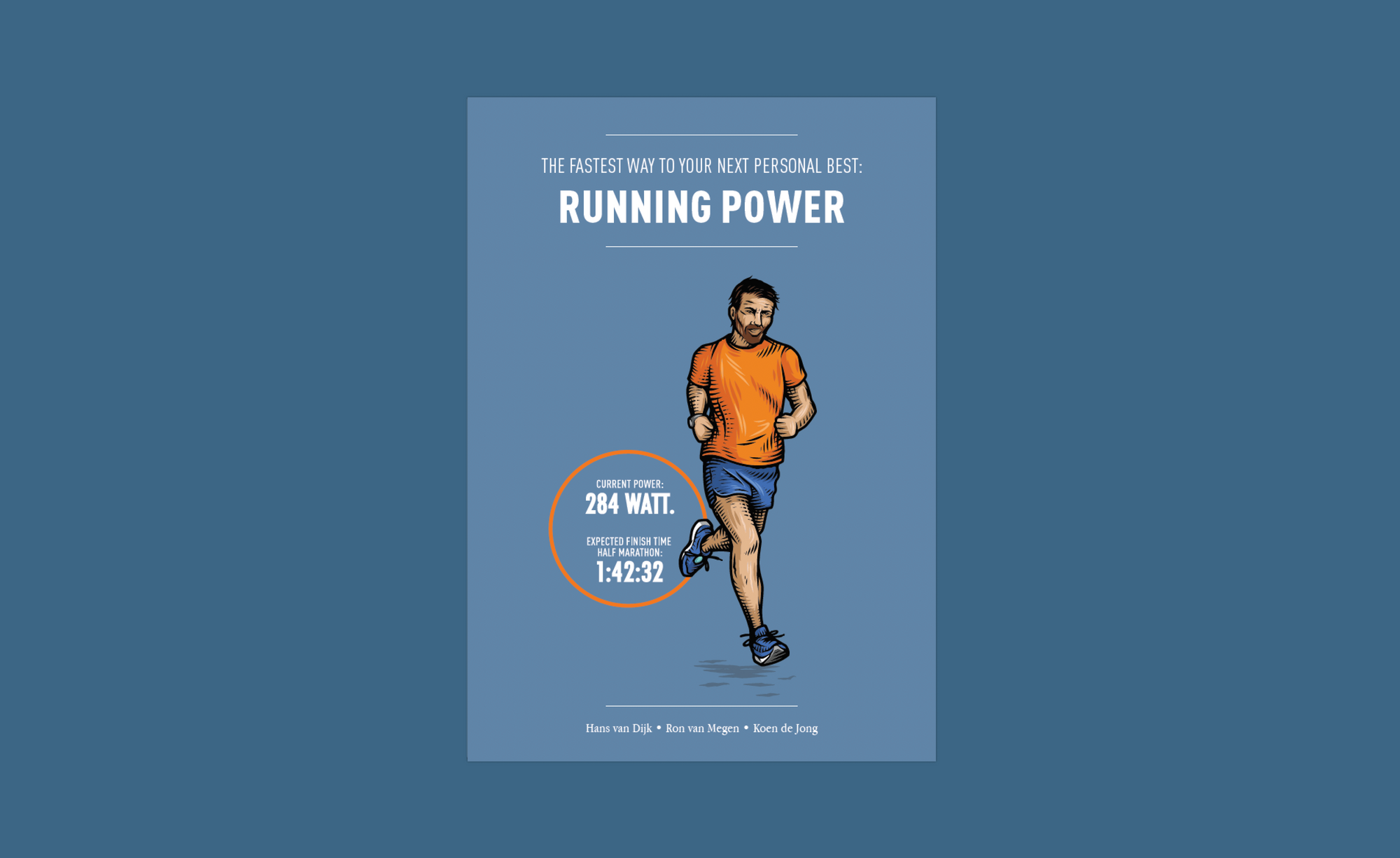What Is Critical Power and What Can You Do With It?

Previously, we wrote about the tipping point (anaerobic threshold) and different heart rate zones.
When running by power, your Critical Power (CP) is a valuable number to know. You can use it to determine your different training zones.
Your Critical Power is the power that you can maintain for a certain duration. Because of this definition, it can sometimes be confusing. In sports literature, this could be the power that you can sustain for 20 minutes (CP20), 45 minutes (CP45), or 60 minutes (CP60). CP60 is lower in wattage than CP45. And CP45 is lower than CP20. After all, you can last for a shorter time with a higher power.
Stryd uses one Critical Power, calculated based on your power curve. Without knowing your Critical Power you can’t properly use your power for training and competitions. A power of, for example, 260 watts says nothing, just like a heart rate of, for example, 173 doesn’t say anything. For the information you gather to be useful, you need to know what capacity you can maintain for a certain period of time.
Until recently, you had to do an exercise test with a sports doctor to accurately determine your heart rate zones. On a bicycle or a treadmill you would go through increasing levels of cycling harder and faster. A sports doctor would take a small sample of your blood at each level to measure your lactic acid values, or you would have to wear a mask for a breath analysis.
A major disadvantage of these expensive tests was that athletes regularly got anxious from wearing the mask or doing the blood test, and that the measurements were therefore not completely true to reality in comparison with outdoor sports. For example, it was possible that (due to rapid breathing) the anaerobic threshold was set too low and athletes started exercising with heart rate levels that were lower than they should be.
Result: frustration due to slow pace and little progression because of overly cautious training.
A power meter has the great advantage that you can determine your Critical Power outside on the street or in nature.
You can take a test to determine your Critical Power, but Stryd also has a feature to automatically adjust your Critical Power based on your workouts: auto-calculated Critical Power. Basically, Stryd itself determines your Critical Power based on a series of training sessions and competitions. The auto-calculated Critical Power is accurate to 1 - 2% for most runners, and adjusts automatically as runners get fitter or out of shape.
To get a good indication of your Critical Power when you first start, 3 training sessions with sufficient variation are required.
For example:
1. Short distance, sprints or accelerations with a duration of 10 to 30 seconds;
2. Medium distance, a 10 to 20 minute pace run, or a 5 km or 10 km at your race pace.
3. Long distance, a gentle endurance run of at least 50 minutes.
After that, the workouts are tracked for the last 90 days and your Critical Power becomes increasingly more accurate.
Every workout counts.
The fact that every run is automatically included in your Critical Power is a luxury that will give you enormous benefits in the long term. In the past you probably went to a sports doctor once a year to determine your VO2 max and your heart rate zones. With Stryd, every training is analyzed and compared with your values from the past. As with any new device, it takes a little thought and dedication to download Stryd’s app and pair your Stryd with your phone and watch. But once you’ve done that, you’ll have the smartest and most loyal trainer in the world, sitting right on top of your shoe. In the app you will see various data under Summary: Stress, Running Stress Balance, Upcoming Events, Power Duration Curve, and Critical Power at the bottom. First, you’ll see your power (in orange), and then your power per kilogram of body weight.
You’ll only want one thing: that your capacity per kilogram of body weight is as high as possible.
It can be very addictive (in a good way!) to work to increase your Critical Power. We see regular sessions on Strava with the subject: Critical Power boost workout. After your workout you’ll have to wait anxiously to see if you’ve earned the notification: ‘Your Critical Power has increased!’
Warning: make sure you always train with Stryd. Koen was once notified that his Critical Power had increased to 5.26 watts / kg. That would allow Koen to run a marathon within 2.5 hours and that’s not correct. What had happened? Koen was running with different running shoes and had forgotten to put his Stryd on his new shoes. So the readings were coming from his Polar Vantage V, not Stryd, and were inaccurately high. Due to the link between Stryd, Strava, and Polar, the training was stored in Stryd’s PowerCenter and included in Koen’s calculations.
You can easily ensure that Stryd doesn’t include one of your sessions in your results. Go to the app and click on Calendar. Click on your training and at the top right you see three horizontal dots. Click on view details and voilà: your training. Include Run in Analysis is normally green. Slide the ball to gray and your training will not be counted.
You see: it’s not complicated, but it is more convenient to just train with your Stryd, then you won’t have this problem at all.
If your Critical Power suddenly drops a number of points, it means that your Critical Power was determined more than 90 days ago and that you haven’t trained at the level of your Critical Power for 90 days. In short, did your Critical Power drop? Then it’s time to get to work! Sounds good, but what exactly does your Critical Power do for you?
If you’re stuck at the same level at the moment but would like to improve your PR on the 5K, 10K, half marathon or full marathon, then your Critical Power is priceless.
Variation in training is important, especially if you train specifically for a PR. Five zones emerge from your personal Critical Power:
-Easy
-Moderate
-Threshold (upper limit of Threshold is your Critical Power)
-Interval
-Repetition
In the chapters focusing on the different distances (5K, 10K, half marathon, and full marathon), we’ll discuss these zones in more detail.
What distinguishes running by power from running by heart rate, is the possibility to do more targeted interval training. The great thing about running by power is that you can work with two zones above your tipping point. You can, of course, run an interval of 200 meters at higher power than intervals of 400 or 600 meters.
That distinction can’t be made with a heart rate monitor.
Above your anaerobic threshold you have only one zone: from your anaerobic threshold to your maximum heart rate. It wouldn’t make any sense to have other zones above your anaerobic threshold for short intervals. Just think about it. If you really run 200 meters intensively, it’s not hard to overshoot your target. But by the time your heart rate is too high, you’ve already finished your 200 meters. If you train by power, you can do targeted intervals at 200 meters. For example, if you want to run 320 watts for 200 meters, you can check after 80 meters (or earlier) whether you’re running fast enough (or too fast) and then you can speed up or slow down.
Another advantage of power training is that you can go full out any time you want. Of course this is always possible, but normally you don’t know exactly how fast you can run at any given distance or time. If you know that you can run 10 kilometers in 50 minutes, it’s easy to figure out how fast you would be on a 5 K, half marathon, or full marathon. But if your favorite run has a nice segment of (for example) 1380 meters, calculations become a lot more complicated. Doing the math for one segment of a run is manageable, but if you have different segments on different laps where you’d like to go full throttle, you obviously don’t want to calculate the ideal time for all those odd distances. For example, for 2130 meters, the ideal run time is slightly different from (for example) 1380 meters. With power and Stryd, all these distances become easy to work with.
What does this have to do with Critical Power?
Based on your Critical Power, you get a beautiful curve showing all wattages between 10 seconds and roughly 3 or more hours. So every distance (and time) is included. And the best part is: you don’t have to do any complicated calculations, it’s all automatic. So, if you accelerate during (for example) 1380 meters, that’s a reliable test run to see whether you’re progressing or not.
POWER DURATION CURVE

In the Power Duration Curve you see a white line (your potential) and blue segments (your actual results from the past thirty days).
This power curve is very interesting for several reasons.
The power curve is based on your best running performance over the past 90 days. The power curve can be found in your PowerCenter at Stryd. To our knowledge, there are currently no other parties that work with a power curve for running, although it has long been commonplace in the cycling world. That’s why triathletes are so excited about running with power. They’re already familiar with the many benefits of the power curve.
What’s the benefit of the power curve?
1. You can go full throttle on your favorite part of your run and you will always get valuable information from it. So even if it’s a hill of 272 meters or a lap with a distance that you don’t normally run in a competition, like (for example) 5752 meters.
2. You can see at what level of power you have to run for a PR at your favorite distance, and you can quickly see whether that’s already feasible or if you still need more training.
We dare to say that your power curve alone is already enough to make meaningful use of a power meter and to train for your PR in a targeted way. Achievements older than 90 days are not included in the curve. It’s about what you can do now, not what you were able to do in the past. If you performed well today, the corresponding point in the curve (duration and average power) will improve immediately. If a 90-day performance falls outside the curve, that affects the curve. The best performance of the past 90 days will take its place.
You can also use the curve the other way around. For example, if you think that 45 minutes on a 10K is feasible, you can check the curve to see which power is associated with that time. Whether or not a certain time is achievable with your current level, can easily be determined using the Race Power Calculator. More on this later.
The Race Power Calculator will give you a good indication of the minimum power level that you must maintain for optimal performance.

Want to learn more about Running Power?
Download The Fastest Way To Your Next Personal Best: Running Power eBook (with over 65+ pages of content) for free to learn simple ways you can use power to improve your running performance.
Click here to download. Enjoy the book!

